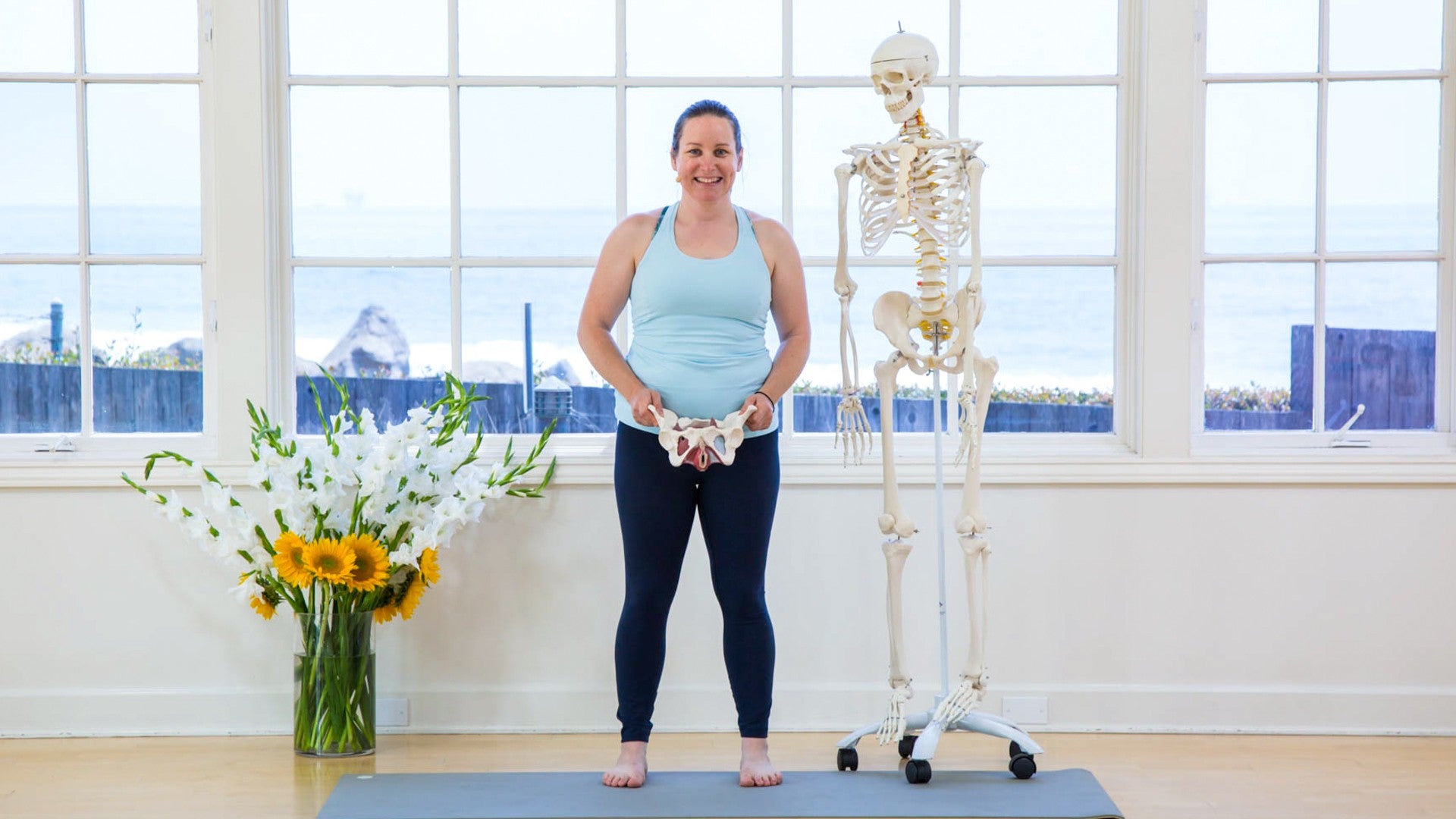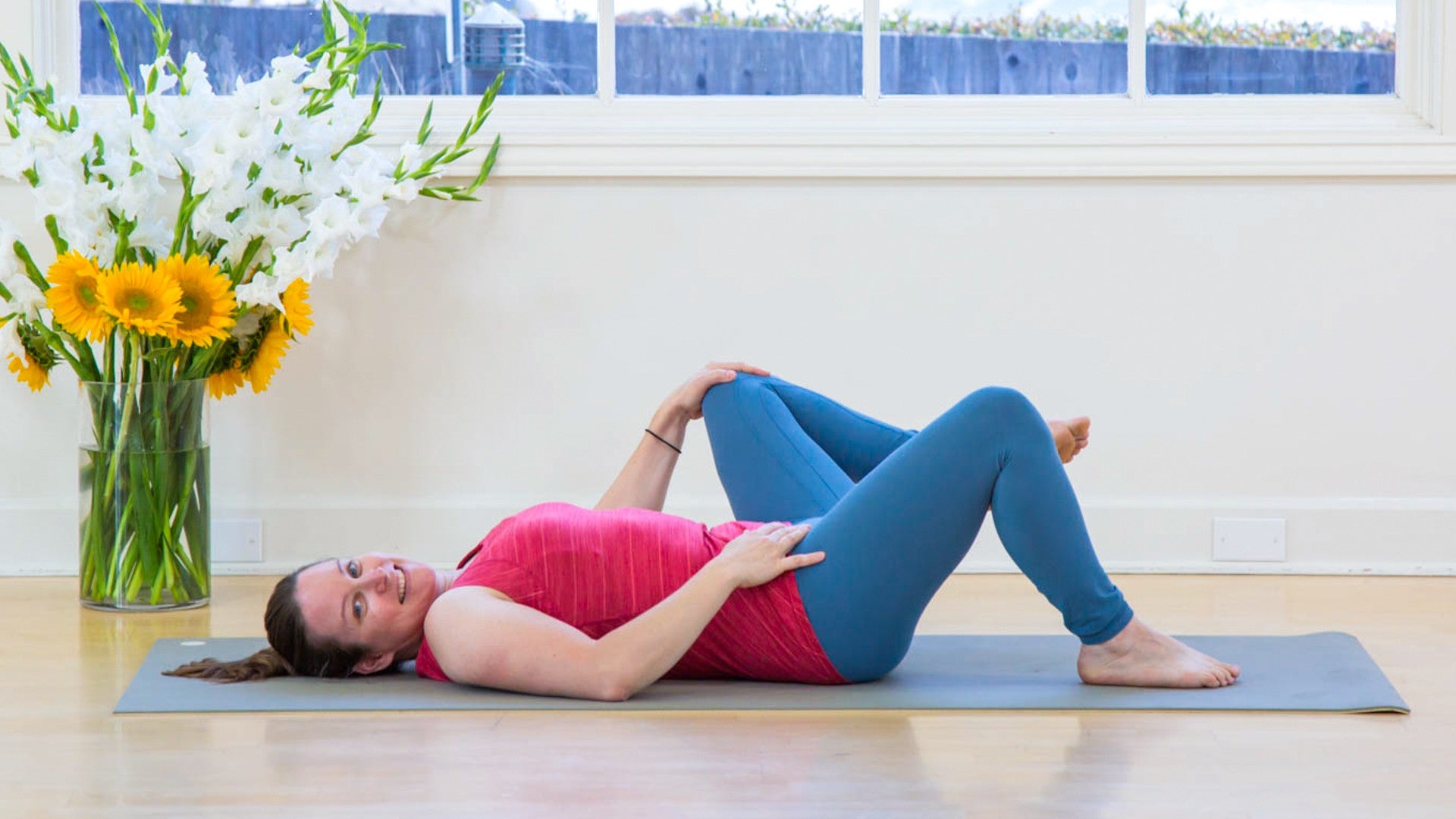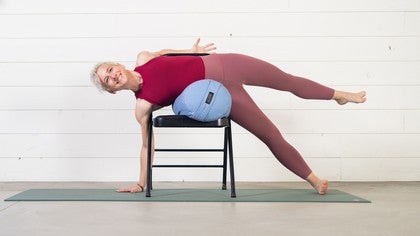
Reducing Pelvic Girdle Pain in Daily Life
The bony pelvis is very strong and sturdy, but to someone experiencing pelvic girdle pain, it may not feel that way. That’s because, for a variety of reasons, our pelvis can become protective and sensitive. But it doesn’t have to be that way. Through many years of dealing with my own pelvic girdle pain, I’ve learned several tools to help reduce this pain. Here are some of my favorites.
1. Visit a Pelvic Floor Physiotherapist / Physical Therapist
A pelvic floor physiotherapist specializes in the pelvis, posture and “core 4” muscles (diaphragm, multifidus, transversus abdominis and pelvic floor). They can identify issues that may contribute to pelvic girdle pain in women and men, such as a hypertonic pelvic floor (when pelvic muscles are over-recruiting).
A physiotherapist can also determine whether kegels are right for you. If the pelvic floor is hypertonic – kegels or mula bandha are not what you need. Instead, your physical therapist might ask you to practice “reverse kegels” to relax the pelvic floor muscles.
2. Exhale When You Exert Effort (Exhale = Effort)
When you use continuous breath and exhale while exerting effort, the core 4 muscles are better able to fire and work together synergistically.
Not convinced? Do a little experiment the next time you lift into bridge pose. Often we lift on the inhale, because front of the body expands as you lift up. Instead, try lifting the pelvis on the exhale and lowering down on the inhale. What do you notice?
Exerting effort on the exhale can help reduce pain if the pelvis is in a state of protection or sensitivity. So during your day and in your yoga practice, notice where you exert the most effort and try to exhale there.
3. Allow Your Sitz Bones to Separate When Your Sit or Squat
When you move into a squat or seated posture, try to “blossom” the sitz bones (ischial tuberosities). In other words, try to lift (not tuck) the tailbone and spread the sitz bones away from each other.
You can also make space between the sitz bones by inhaling as you sit down or squat (and exhaling as you come back to standing). This is because on the inhale your pelvic floor muscles move downward. As you breathe in, this creates more space between the sitz bones. Also, bending the knees allows the sitz bones to spread out more.
4. Use an ‘S’ Breath When You Sit or Stand
Moving from sitting to standing can often cause pain in a sensitive and protective pelvis.
To reduce the pain, try this the next time you stand up from seated. Move to the front of the chair. Find your natural spinal curves and neutral pelvis. Then make “tiger claws” by bringing your fingertips to your thighs. On your next exhale, make an ‘S’ sound as you stand, keeping your fingertips on your thighs.
When you sit down from standing, do the same thing. Press your fingertips into your thighs. On the exhale, make an ‘S’ sound and sit down. Remember to lift (not tuck) the tailbone as you sit down.
If you are out in public and don’t want to use the ‘S’ breath, try just exhaling without the sound.
5. Shift Side to Side When Standing or Walking
If you experience pelvic girdle pain when you are standing, try shifting side to side very mindfully. Bend the knees slightly, and press one heel into the ground. Come back to center, and press the opposite heel into the ground. This movement can also be helpful for SI (sacroiliac) joint pain.
If you experience pain while walking, try walking backwards. This can be done easily when you are doing activities like sweeping (not as easy walking on a busy sidewalk).
6. Aim for Slower Symmetrical Movements When Possible
For example, when moving from sitting on the floor to standing, instead of moving into kneeling and stepping one foot onto the ground, try kneeling and then moving into a version of downward dog, table or squat. Can you keep the feet parallel and not step one ahead of the other? Ask the hands to do the movement.
When you are lying down, try rolling over in a new way. First, find your breath. Straighten the leg that is on the side that you want to roll onto. Bend your opposite knee and move it slightly away from the centerline of the body. On your next exhale, press into the heel of the bent-knee side until the pelvis lifts a little. Use this movement to roll to your side. On your next exhale; use your hands to bring you up to sitting. To lie down, do the same thing, but in reverse.
7. Choose Specific Yoga and Movement Modalities
Look for movement modalities that help strengthen the muscles that stabilize the pelvis (core 4 and glutes). Also, a yin practice (like restorative or gentle yoga) that activates the parasympathetic nervous system can be very effective in reducing persistent pain.
Short Practice for Pelvic Pain
Comments
No comments yet. Be the first!

















You need to be a subscriber to post a comment.
Please Log In or Create an Account to start your free trial.